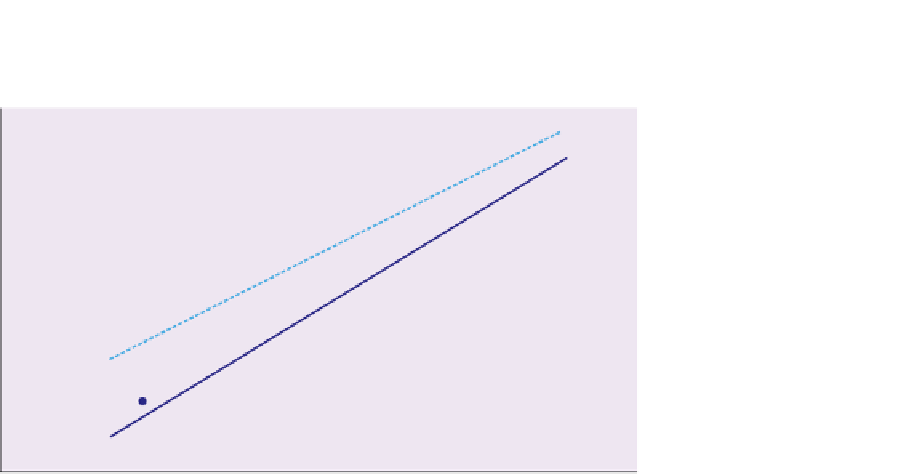Biology Reference
In-Depth Information
50
Erythrocebus
Pan
10
Gorilla
1
Cebus
Colobus
0.1
0.01
Galago
Lemur
Lepilemur
0.001
0.05
0.1
1
10
100
1000
2500
Population group weight (kg)
Fig. 2.5
Home range size plotted against the weight of the group that inhabits the
home range for different genera of primates. The solid circles are folivores, through
which there is a solid regression line. The open circles are specialist feeders (insectivores
or frugivores) and the regression line through these points is dashed. Some of the
genera are indicated by name. From Clutton-Brock and Harvey (1977).
that fruit and insects are more widely dispersed than leaves, so specialist feeders need a
larger foraging area in which to find enough food.
Sexual dimorphism in body weight
In primates, males are often larger than females. Two hypotheses could explain this
observation. Sexual dimorphism could enable males and females to exploit different
food niches, and thus avoid competition (Selander, 1972). If this was true, then we
might predict that dimorphism would be greatest in monogamous species where males
and females usually associate together and feed in the same areas. Alternatively, it could
have evolved through sexual selection, large body size in males being favoured because
this increases success when competing for females (Darwin, 1871). If sexual competition
is important then we would predict that dimorphism should be greater in polygamous
species, where large male size would be especially advantageous because a male could
potentially monopolize several females.
The comparative data show no sign of the trend predicted by the niche separation
hypothesis but do support the sexual competition hypothesis; the more females per male
in the breeding group, the larger the male is in relation to the female (Fig. 2.6).
Sexual
dimorphism
evolves from
sexual
competition
Sexual dimorphism in tooth size
Males often have larger teeth than females. Again, two hypotheses can be suggested
(Harvey
et al
., 1978). Large teeth may have evolved in males for defence of the group



































































